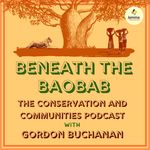Life After Attacks & Loss Of Livelihood
In this episode, we remain in Namibia to look at the human wildlife conflict that takes place in, and around, conservancies and discover how, despite some horrific stories, governments and communities can come together to create an effective co-existence between humans and wildlife.
We visit the Nakabolelwa Conservancy in the Zambezi region to hear how it can be flooding, rather than drought, that affects farmers – but also how elephants and buffalos not only damage the crops that villagers need to survive, but can also maim and sometimes kill them.
The country’s Ministry of Environment, Forestry & Tourism offers some compensation and support for those affected by human wildlife conflict, there is the acknowledgement that more can – and sometimes needs – to be done.
Both Richard Poniso and a farmer named Michael tell their stories.
Dominic Muemma, operations manager for IRDNC (Integrated Rural Development and Nature Conservation) in the Zambezi region, explains how they empower local communities to manage their natural resources and help form conservancies, which results in revenue from tourism and the sustainable utilisation of wildlife.
Despite the challenges and some heart-breaking stories in this episode, with 86 conservancies in the country, communities are also able to accrue benefits from the natural resources around them, alongside the tourist trade, and receive 100% of the income to be used in ways they see fit in their local areas.
We speak to them all, beneath the baobab.
Visit the website https://jammainternational.com to explore more international projects.
The video of this episode can be seen here: https://youtu.be/6JX8G7c3Gms
https://www.nacso.org.na/conservancies/nakabolelwa
Hosted on Acast. See acast.com/privacy for more information.
